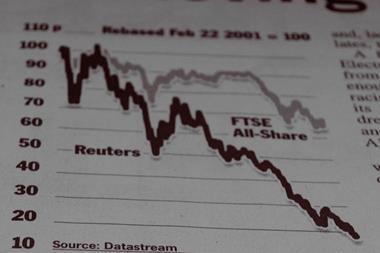Property lenders have warned that the UK’s decision to leave the EU could put the debt markets back five years as appetite for risk dries up, margins rise and leverage levels fall.

Faced with so many unanswered questions about the UK’s future relationship with the EU and the impact of the referendum result on the property market, lenders have a difficult task assessing and pricing risk.
“The result is clearly negative economically - the issue is whether it is moderately negative or very negative,” sums up Paul House, managing partner of Venn Partners. “And that will depend on the success or failure of what promise to be complex negotiations.”
Uncertain territory
As a result, the watchword is caution. “We are clearly in very uncertain territory now,” says Gregor Bamert, head of origination, real estate finance, at Aviva Investors. “Our short-term response is to carry on looking at things but be mindful of how the situation unfolds. The important thing is that we don’t do things rashly.”
The good news is there are no reports of lenders panicking and pulling out of deals in the wake of Brexit. After speaking to clients on the morning of the result, Alexandra Lanni, head of transactions at Laxfield Capital, said the debt advisory firm had a number of deals in transit that lenders had pledged to honour.

However, it is likely that lending terms will become more conservative, and pricing will increase over the coming months.
The slump in real estate share prices after the Brexit vote implies that a sharp correction in property values is on its way. This means that lenders will be looking particularly closely at the leverage they are willing to offer. The typical loan-to-value (LTV) ratios for senior debt and mezzanine debt have already started to slip down from the highs seen last year, and this is now likely to accelerate.
“It feels that we could go back to the leverage and pricing we saw between 2010 and 2012,” says Mark Bladon from Investec Property Finance.
The number of lenders willing to fund secondary property and back development projects is also likely to thin out.
“I’d expect there to be a refocusing on prime and core in terms of lending opportunities,” predicts Mark Titcomb, head of Deka’s London office.
Lending costs
Margins are also likely to increase as competition between lenders falls and they demand higher returns to compensate for higher risks.
The Bank of England could also raise interest rates if sustained weakness in the pound leads to inflation. However, borrowers can take heart from the fact that in the more immediate future the opposite is now considered highly likely.
Last Friday, UBS’s UK economist David Tinsley said he expected two rate cuts in the next six months as the central banks seek to shore up confidence. This expectation was reflected in the swap market.
By lunchtime that day, the five-year quarterly swap had fallen by 0.31% to 0.65%, according to JC Rathbone.
The upshot is that few expect the gap between the cost of debt and property yields to close any time soon. This should help protect capital values.

The industry is also nothing like as highly geared as it was going into the financial crisis, which should limit the number of forced sellers. “I think the idea that commercial real estate values will collapse is far-fetched, in the absence of a marked increase in borrowing costs,” says Titcomb.
However, the investment market is expected to remain subdued in the second half of the year, which would put pressure on lenders.
Many banks are already well behind on their lending targets after a slow start to 2016 saw the volume of requests for acquisition loans above £50m in the first quarter fall to half the total of the final quarter of last year, according to Laxfield.
For property lenders already facing a weakening investment market, regulatory uncertainties and low or even negative interest rates, Brexit was the last thing that anyone wanted.






























No comments yet